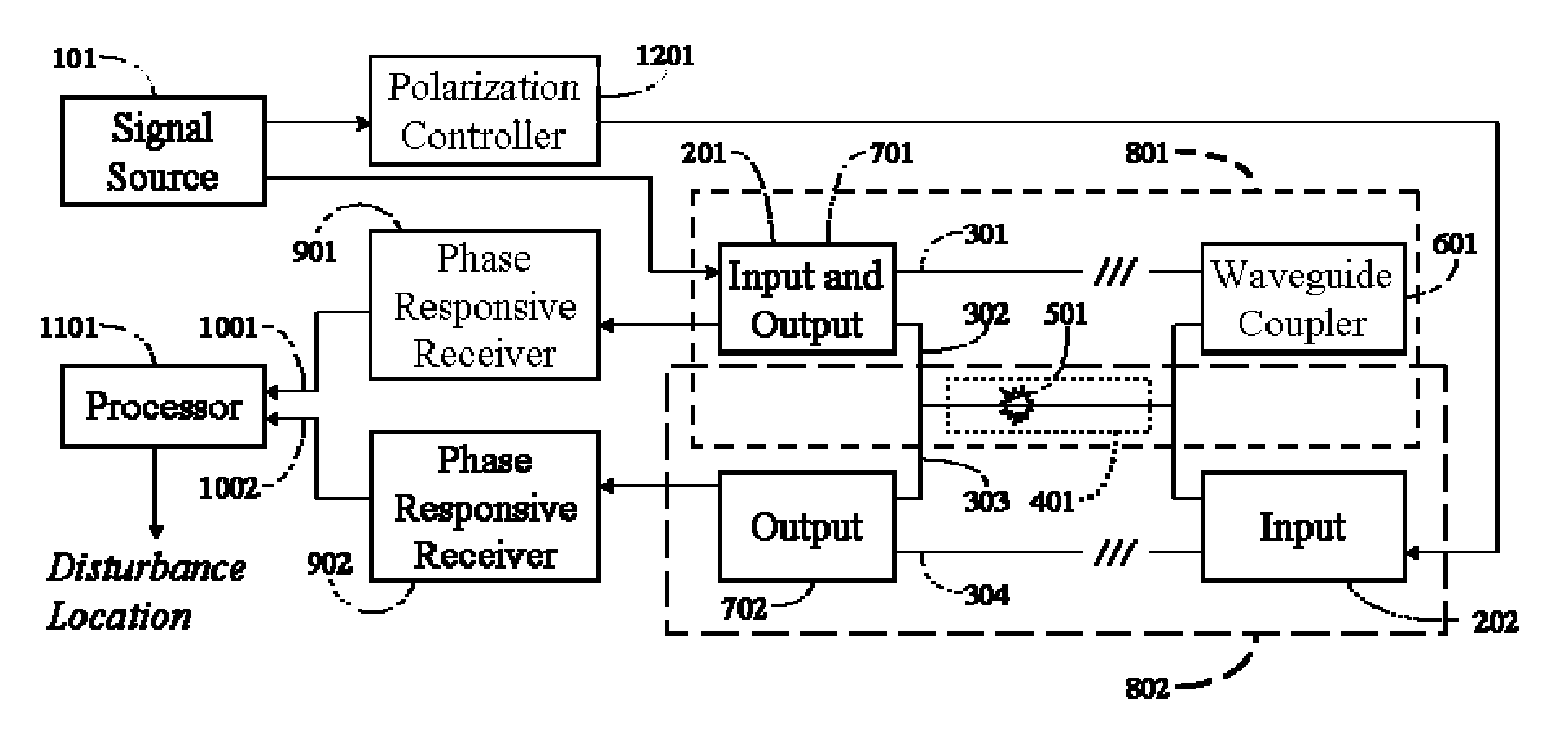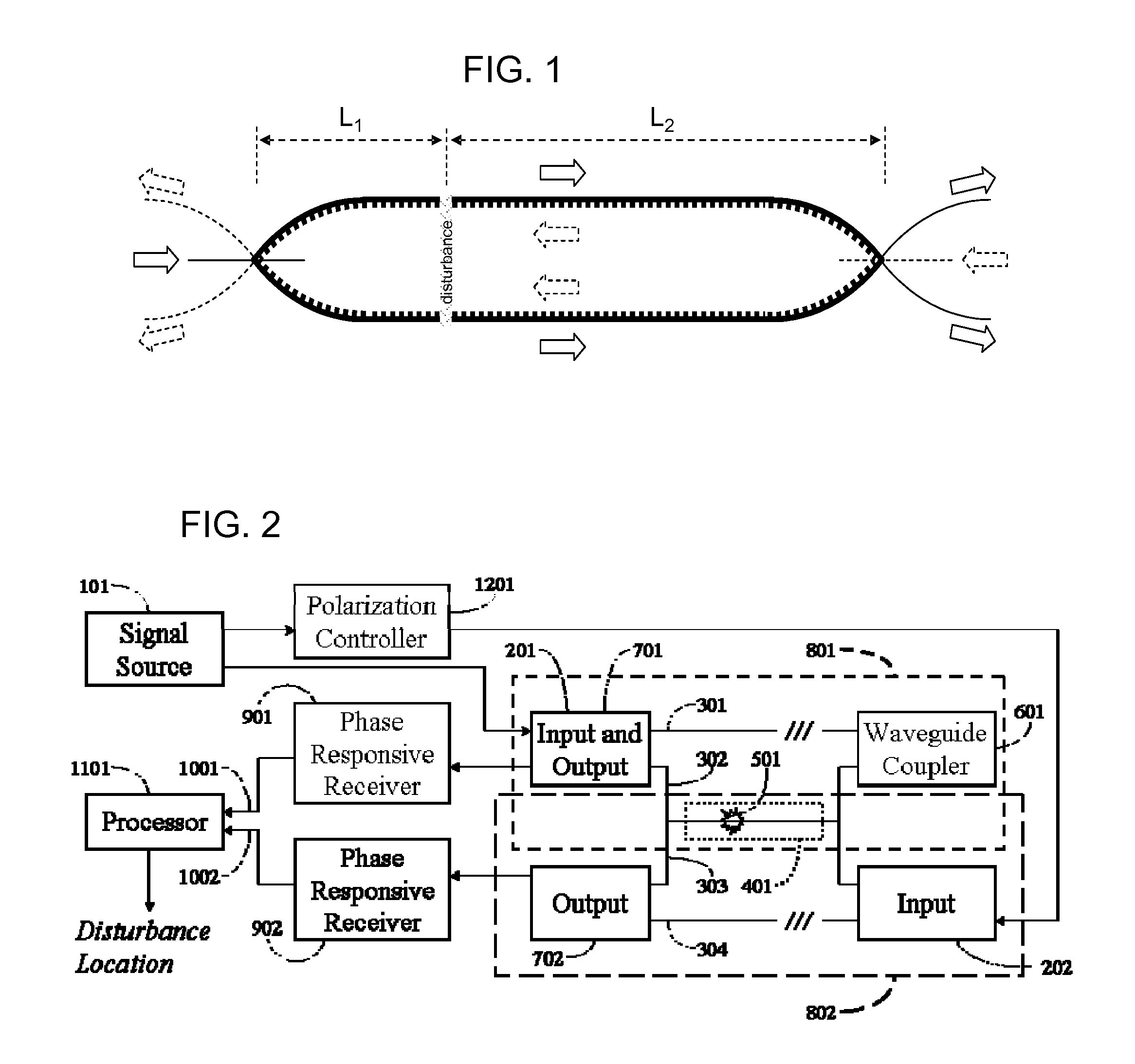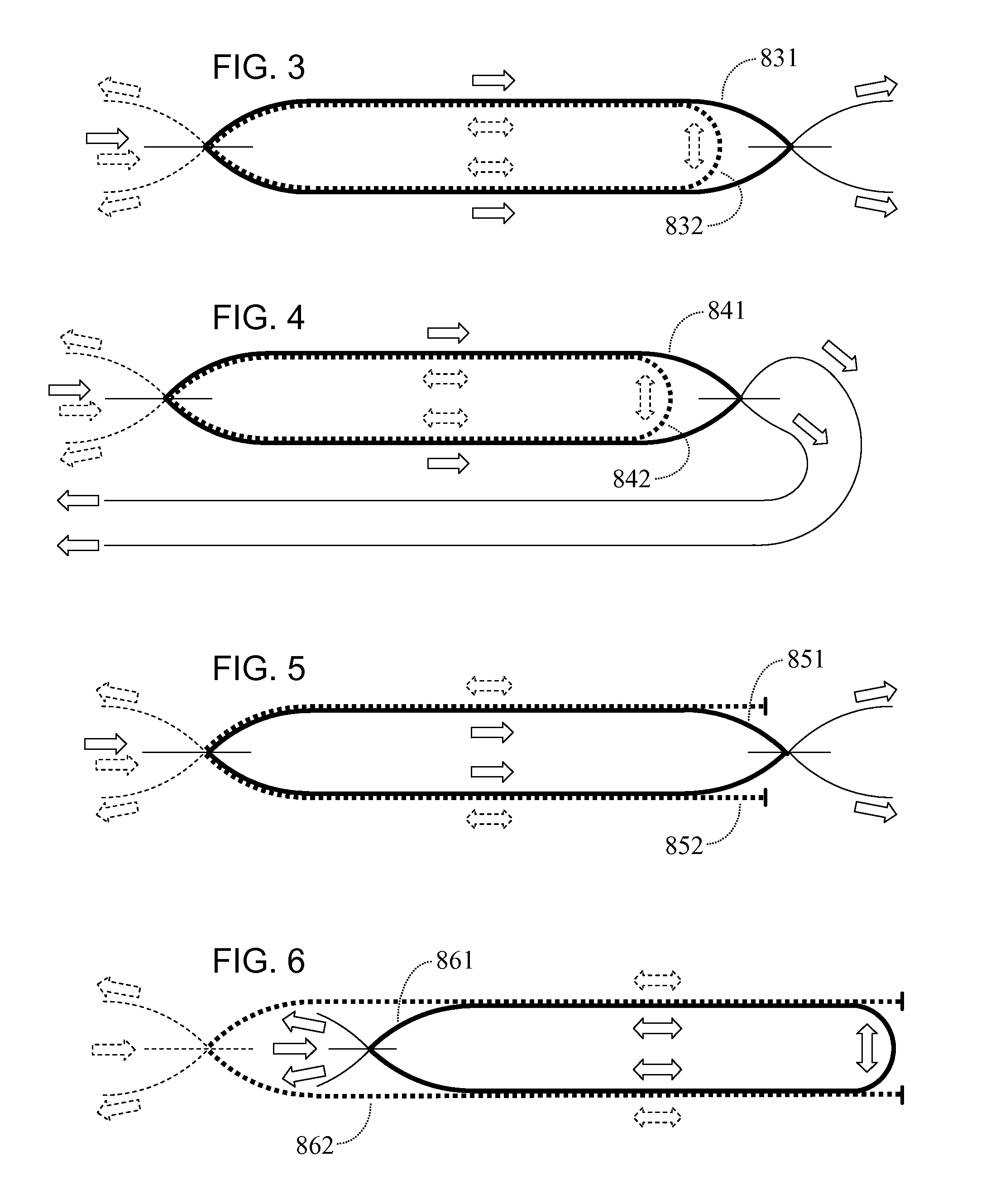Detection and location of boundary intrusion, using composite variables derived from phase measurements
a technology of boundary intrusion and composite variables, applied in the direction of instruments, optical elements, optics, etc., can solve the problems of localized physical disturbance, inability to detect and locate boundary intrusion, and inability to implement intensity-based techniques such as udd. to achieve the effect of reducing the cost of detection and installation, and avoiding the failure of proposed intensity-based techniques
- Summary
- Abstract
- Description
- Claims
- Application Information
AI Technical Summary
Benefits of technology
Problems solved by technology
Method used
Image
Examples
Embodiment Construction
[0037]According to respective embodiments of the invention disclosed herein, a disturbance such as vibration is detected and located along a fiber optic waveguide. Multiple optical fibers or optical fibers carrying multiple signals are configured as two or more interferometers. The interferometers can be of the same or different interferometer types, according to respective embodiments. Signals split from a source are recombined after the signals propagate through the point of the disturbance, where phase variations are induced. Phase responsive receivers at the combiners each produce mutually independent detector signals representing phase relationships between the combined signals. Variations over time in the phase relationships are processed to produce composite signals. The equations embodied by processing differ based on the specific interferometer configuration used. For each interferometer configuration, one embodiment produces composite signals with substantially identical w...
PUM
 Login to View More
Login to View More Abstract
Description
Claims
Application Information
 Login to View More
Login to View More - R&D
- Intellectual Property
- Life Sciences
- Materials
- Tech Scout
- Unparalleled Data Quality
- Higher Quality Content
- 60% Fewer Hallucinations
Browse by: Latest US Patents, China's latest patents, Technical Efficacy Thesaurus, Application Domain, Technology Topic, Popular Technical Reports.
© 2025 PatSnap. All rights reserved.Legal|Privacy policy|Modern Slavery Act Transparency Statement|Sitemap|About US| Contact US: help@patsnap.com



